by Faniry
INTRODUCTION
Due to its isolation many stories are not written, many aspects of the country are incomplete. This fourth biggest island of the world is the “Galapagos of the African Continent” and the farthest gateway to Asia. A mixture of 18 cultures, a variety of landscapes, a nature with still many secrets to unveil are the highlights that only few countries boast to have. Madagascar began its slow separation from Africa during the age of dinosaurs. At that time, only very distant primate ancestors existed on earth. Over the millennia, the lineage that includes apes, monkeys and humans evolved on the African mainland, while lemur-like ancestors evolved in Madagascar. These lemurs lived in a gentle world, with no competition from monkeys and with none of the predators of Africa.
We agree, no wildlife safari as in Africa, but the contrasts, the cultures, the many endemic (80%) animals and plants that you will see, is part of the mysteries of this unique destination. A waiting call rings out through the forest. The Indri lemur is singing. The song has given rise to numerous legends about its origin…
DETAILED DAY TO DAY PROGRAM
DAY 1: ARRIVAL IN ANTANANARIVO
Arrival in Tana. Meet and greet at the airport then transfer to your hotel. Briefing with your guide. Night at Gassy country house on BB.
DAY 2:TANA – ANTSIRABE – AMBOSITRA: 259 km: 6 hours
After breakfast, we head on south on National Road N° 7, towards Antsirabe, 169 km from the capital. The scenery is composed with granite mountains, valleys with wide rivers, terraced rice paddies, eroded hills called “lavaka. Stop in Ambatolampy, an agricultural city known for its aluminum recycling, where we visit familial aluminum factory making cooking-pots. Arrival in Antsirabe by the end of afternoon. Founded by Norwegians in 1856 who made their basis there because of its cool and clement climate, Antsirabe is quite an elegant city and one of the most attractive cities in the country. Its atmosphere makes one really feels and looks like a European city. On the way, we will do a short city of this beautiful colonial city during which we will visit its cathedral, its colorful local market. Afternoon, we drive southward to Ambositra still across the highland with its beautiful rice-fields on stage, and large forest of pine and eucalyptus. One thing which marks the highland region is its architecture. Almost all houses are made with ornately carved wooden balconies and shutters with nice colors. Night in hotel on B&B.
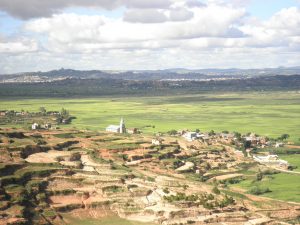 DAY 3 :AMBOSITRA: ANTOETRA: 25 km: 2 hours
DAY 3 :AMBOSITRA: ANTOETRA: 25 km: 2 hours
After breakfast, continuation to Ivato and from there we leave the National 7 and take 15km track to Antoetra the center of Madagascar ‘ s wood carving industry. We start our day trek to the village of Ifasina, a “Zafimariy village”. The Zafimaniry are a subgroup of the Betsileo and are known for their exquisite carvings. They are the sole remaining people, who up till now have kept this unique woodcraft culture which was previously widespread over the whole island of Madagascar. Their art is classified as world heritage by UNESCO. Many of their homes are true works of art and you will have the opportunity to get closely acquainted with village life. You see the wood carvers at work and enjoy the surroundings. Back to Ambositra at the end of the day. Night in hotel on B&B.
DAY 4:AMBOSITRA – ANDRINGITRA: 245 km: 6 to 7 hours
After breakfast, we head on southwards to Fianarantsoa, the capital of Betsileo tribe, the second largest tribes of the highland. Called “the gate of the South” it is the centre of the catholic religion and the seat of the Jesuit order. The best schools and university are found there. Fianarantsoa means «Place of good learning”, as the Betsileo were taught by the Merina governors during 19th Century to behave in a good and civilian way. Short city tours of Fianarantsoa which was build on the same plan as Antananarivo, with 3 different levels. Then head on southwards for 1-hour drive to Ambalavao: visit to a wine maker for wine tasting as Ambalavao is the centre of the wine industry, then visit to the “Anteimoro paper” workshop. Paper making was introduced in Madagascar by Arab traders. Wednesday and Thursday are held in Ambalavao the most important and famous zebu market in Madagascar where many traders all over the island come and sell or buy zebu. In case we happen to be there in one of these day, it is a good opportunity to experience this weekly big event for local people where young girls according to the tradition are still traded against zebu. On to Anja, a village park run by the local community where many ringtail lemurs can be seen during our 2 hours hike inside the park. After the visit, we leave the RN7 and with our 4×4 truck, take a dirt track of 25km to reach the valley of Tsaranoro, on the foot of Andringitra Massif. Overnight in hotel on B&B
DAY 5: ANDRINGITRA
Today, we hike across the Tsaranoro valley, the primary habitat for Ring-tailed lemurs. During our walk, we will meet many families of lemurs’ catta. Besides, the “National Park of Andringitra” is a paradise for walkers and climbers with spectacular views of huge granite peaks towering above the Tsaranoro Valleys. It is an ideal location for individual day treks or guided multi-day expeditions. The treks lead through open savanna and tropical humid or dry forest. Various species of falcon, snakes, lizards, chameleons and plenty of orchids can be found. The best period for climbing and visiting the valley is from March to December. The walk is also an opportunity to meet the Bara, cattle herding tribe and the Betsileo, who mainly live on rice cultivating, zebu raisers. Overnight in hotel on B&B
Day 6: ANDRINGITRA – ISALO: 230 km: 6 hours
We take our 4×4 truck and drive for 45 minutes on dirt track to reach the main road RN7. From there, 90 minutes drive to Ihosy the capital of Bara tribes, along the mountain chain of Andringitra, which serves as a transition between green highland and the dry south. The landscape is changing and becomes more and more grandiose. Huge Granite blocks are marking the spacious and empty plains. It is the “Gate of the South” which marks the end of the Highlands and the beginning of the south. We feel like being swallowed by this emptiness. We pass through “plateau de Horombe a vast empty savannah, a red laterite soil. We are in “no-man’s land”. From time to time we can see herds of zebus, accompanied by armed Bara men who are darker –skinned with African features if compared to Merina. They are cattle-raisers and many activities during their life are associated with Zebu. For instance, to get a wife, a man has to steal few zebus to show his strength and virility Arrival in Isalo by the afternoon. Overnight in hotel on BB
Day 7:SALO NATIONAL PARK: Piscine Naturelle and Canyon des singes
4 to 6 hours hike in ISALO National Park. The park covers an area of 81,540 ha comprising the entire stretch of the Isalo massif. This huge mountain is very spectacular with its eroded sandstone mountain. 10 minutes drive from Ranohira village to the parking, then 90 minutes walk up and down,allowing us to have a very spectacular view of this huge sandstone mountains with a different colors, its strange and eroded forms giving many different images like “the tortoise”, “the masks” and “the crocodiles”. Vegetation is composed with Uapaca bojeri, Pachypodium rosulatum, an endemic species in Isalo, Aloe isaloensis. During the hike, one can see provisional tombs inside the rock, as these mountains are also the place Bara put their dead, the time they save money to bury them into their real tombs. The canyon is just spectacular with its narrow and deep gorge. One will see small stream of water, small rivers which are marked by lines of brilliant green, generally made up of numerous Pandanus pulcher and the delicate, slim-stemmed, feathery leaved palm Chrysalidocarpus isaloensis. Along the way, for lemur’ s lovers, one might see sifakas , brown lemurs and ring-tails, also fifty five species of birds lizards, snakes. Back to the hotel at the end of the afternoon. Then around 04.30, visit the “ fenêtre de l’Isalo” for the sunset. Back and overnight in hotel on BB
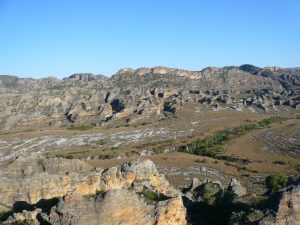 Day 8:ISALO – ZOMBITSE – TULEAR – IFATY: 268 km: 4 – 5 hours
Day 8:ISALO – ZOMBITSE – TULEAR – IFATY: 268 km: 4 – 5 hours
After breakfast, head on to Tuléar, the terminal of the National road N° 7. After 1 hours’ drive, stop in Ilakaka, a tiny village transformed into a busy town since the discovery of sapphire 15 years ago. From there, 1-hour drive to reach Zombitse National Park where you have 1-hour hike with a special guide in a semi-dry tropical forest, home to few endemic birds and 6 species of lemurs. From here, a new scenery arises, composed with semi-dry forest of the west, baobabs and the thorny bush of the south. On the way, one can also admire the colorful tombs of Mahafaly and Antandroy tribes. Arrival in Tulear at the end of afternoon. City tours of Tulear then continuation to Ifaty which is situated in the Deep South. We will cross the dry and sandy soil where local people suffer for the lack of drinking water. The landscape will be dominated by the spiny forest like the cactus, different euphorbiacea and didieracea. Many mangrove trees are lining along the coast alternated by Vezo villages which earn their living on fishing. Night in hotel on B&B.
Day 9:IFATY
Day off. Ifaty lies on the north of Tuléar. Situated in the largest lagoon of the country, it is an ideal place for relaxing. Many excursions are possible on the spot like the “Reniala “ inside the spiny forest, a typical forest of the south where we will find some Baobabs and thorny bush. It is also possible to do whales watching or sea excursion to the coral reef with local boat. From July to mid-September, whales are coming to the cool sea of Madagascar to give birth. It is a very spectacular experience as sometimes we will see the whales very near our boat. Situated in the largest lagoon of the country, Ifaty is also protected by a large coral reef which makes it an ideal place for diving and snorkeling. In the afternoon we can walk to the village of Mangily where we can have an experience off the Vezo Fishermen’s life, especially when the fishermen come back from fishing. Night in the same hotel.
Day 10:IFATY – ISALO: 268 km: 4 hours
Morning free at Ifaty, then after lunch drive back to Isalo. Night in hotel on B&B
Day 11:ISALO – RANOMAFANA: 316 km: 8 hours
Drive northward to Ranomafana. Today we enter the rocky mountain chain of Andringitra which is very picturesque remaining of Arabian civilization. We cross the “Gate of South” which serves a transition between the south and the fresh and green highland. Then the landscape changes when we enter the highland. Just before Alakamisy Ambohimaha, we leave the RN7 and take the RN45, to Ranomafana, which will be reached in 45 minutes. The landscape changes into a lush green one, with a tropical forest on the both sides, sometimes interrupted by small villages selling bananas or charcoal. The national Park of Ranomafana was created in 1991. It covers an area of 40,000ha and consists of a series of steep hills from which numerous small streams run into the river Namorona, which tumbles down the valley in a series of waterfalls and rapids. Arrival in Ranomafana late in the afternoon, check-in and overnight in Hotel on B& B
 Day 12:RANOMAFANA NATIONAL PARK
Day 12:RANOMAFANA NATIONAL PARK
4 to 6 hours expedition in the forest with a local guide to see 12 species of lemurs. Ranomafana is the most important site of lemurs in Madagascar; it is the only confirmed site for the two rarest species the greater bamboo lemur Hapalemur simus and the golden bamboo lemur Hapalemur aureus. Different species like Fulvus Rufus, Varieca Variegata, Hapalemur griseus, Avahi lanigeur, Lepilemur mustelinus, Propithecus diadema edwardsi, Cheirogaleus major and Daubentounia madagscariensis are also seen there. More than 100 birds, five species of viverrids, reptiles, lizards, chameleons, butterflies and other insects have been recorded in this park. The area is covered with forest, in the higher areas, the trees are festooned with mosses and lichens, and much of this secondary forest is dominated by the introduced tree Psidium cattleyarum, also giant bamboo Cephalostacyum viguieri. Various orchids such as Bblophyllum and Eulophiella, steep mountains, dramatic waterfalls and natural hot springs make this endangered and exotic forest charming and unusual. The name Ranomafana means “hot water” due to its thermal springs. In the afternoon, we walk to the “ Tanala village”, another tribe who lives in the tropical and dense rainforest of the east. They are foresters and mainly live on agriculture and woodcarving. Overnight in the same hotel.
Day 13:RANOMAFANA – MANANJARY – AMBOHITSARA: 120 km: 3 hours – 4 hours navigation
In the morning, we head on to Mananjary with RN 25. This 3 hours journey brings us to the region of “Tanala” or “people from the forest”. We drive along the tropical rainforest of the east, with bamboo trees, banana, travelers palm, its leaves spreading out like a fan. Landscape will be composed with hill, villages, charcoal makes, rivers where we can find gold-diggers women and children. This area is known for the gold that is mined there. In the villages we will see women with gold teeth, the sign of wealth. Arrival before noon in Mananjary then we start our navigation along the “Canal des Pangalanes” to reach Ambohitsara. Night at the Auberge Ambohitsara on B&B
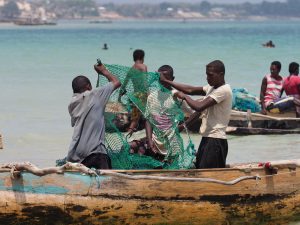 Day 14:AMBOHITSARA – NOSY VARIKA – MASIMELOKA: 8 hours navigating –
Day 14:AMBOHITSARA – NOSY VARIKA – MASIMELOKA: 8 hours navigating –
Morning, we continue our navigation along the “Canal des Pangalanes” with a flat bottom motor boat till Masimeloka. Since the east is very rich and fertile, there are many plantations of coffee, spices, fruits, woods, vegetables. The transport along the east coast is very difficult, road cannot be built due to the many rivers and swamps. Also the sea navigation along the east coast is very dangerous due to the lack of natural harbors and the rough seas condition of the Indian Ocean. Inland waterway proved to be the only solution to transport goods and harvest from this very rich area to the main harbor of Tamatave. This was done by linking all lakes, rivers and swamps by hand-dug canals. The canal was started during the reign of Radama II, by the end of 19th century, and continued by the French colonist who used men-power imported from Indochina, which explains the presence of Chinese and its influence on the daily life of local people. Canal des Pangalanes means “canal of thieves” because it was built by forced-labors (stolen labor as not paid) then the canal was used to steal the riches of the country. We overnight on camping with diner
Day 15:MASIMELOKA – MAHANORO: 4 hours navigation – MAHANORO – VATOMANDRY: 90 km: 90 minutes
Today we navigate between 3 to 4 hours further north, till Mahanoro the end of our journey by boat. We leave Masimeloka around 7am to be in Mahanoro around 11am. Along the canal, we’ll meet local fishermen, families using pirogue and many “boat brousse” to transport goods and passengers, also people doing their shopping on the boat. As life of locals is based on the canal, their daily activities take place on the canal: women doing their washing, their dishes, having bath, children swimming or playing merrily with geese and ducks, men fishing with large nets. From time to time, the canal is too shallow, and we will need to give a push! The channels in this area, without roads, are the only way to get anywhere! By noon we arrive in Mahanoro, which is also the place where the navigable part of the canal ends and where the canals and the sea meet. The houses where we stay are close to the beach. Here swimming in the sea is not advisable because the current is too strong. We continue our drive till Vatomandry that we’ll reach.within 90 minutes Night at hotel on BB
Day 16:VATOMANDRY – ANDASIBE:
After breakfast, take the RN 11A and drive up to Antsapanana, where we take the RN 2 and we drive for 2 to 3 hours to reach Andasibe. We stop in Ranomafana, where we might see some gold- searchers on the river. Arrival in Andasibe in the afternoon. Check-in and overnight in Hotel on BB.
Day 17:ANDASIBE
Morning visit of the Special Reserve of Andasibe, to see the Indri Indri the biggest lemurs of the island. This 810-ha reserve is quite unique with endemic fauna and flora. It contains a wide variety of orchids, canopy, animals like chameleons, tenrecs, and many birds. In the afternoon, we will visit the private reserve of Vakôna where we find four species of lemurs and other animals. In the end of the afternoon, visit of a Betsimisaraka (The-Many-inseparable) village, the second largest tribe of Madagascar who mainly lives on farming, agriculture and wood exploitation. Night in the same hotel.
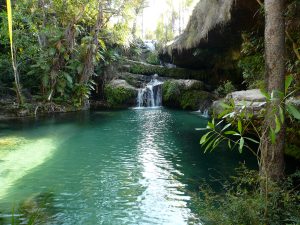 Day 18:ANDASIBE- TANA: 145 km: 4 – 5hours:
Day 18:ANDASIBE- TANA: 145 km: 4 – 5hours:
At 07.00 in the morning, 3 to 4 hours drive to Tana, still on the RN2 across the green landscape of the East. We drive through tropical rainforest, mountains, valleys with many small lakes and rivers. Stop in Moramanga, a historical city where the resurrection against the colonisation took place. We can visit the “Musée de la gendarmerie” and also the local market. From there 3 hours drive before we reach Tana by noon. Transfer to the airport and assistance for check-in for your international flight back.
END OF SERVICE Price per person on Euro
Itinary
FLIGHT TO TANA
Hotel
GASSY COUNTRY HOUSE
Type and Star ranking
HOUSE 2 - 3 STAR – ROOM
Parks-Excursions
Visit-Hike
Itinary
TANA - ANTSIRABE - AMBOSITRA
Hotel
ARTISAN
Type and Star ranking
ECOLODGE 2 STAR – ROOM Nice atmosphere, in a lovely garden
Parks-Excursions
CITY TOURS TANA
Visit-Hike
AMBATOLAMPY ALIMIMIUM
Itinary
AMBOSITRA – ANTOETRA - AMBOSITRA
Hotel
ARTISAN
Type and Star ranking
ECOLODGE 2 STAR- BUNGALOW – typical Zafimaniry wooden houses, dining room bar has the atmosphere of mountain hut
Parks-Excursions
CITY TOURS ANTSIRABE
Visit-Hike
BETAFO FOR BLACKSMITH - WOOD CARVING FACTORY AMBOSITRA
Itinary
AMBOSITRA - ANDRINGITRA
Hotel
CAMP CATTA
Type and Star ranking
ECOLODGE 2 STAR- BUNGALOW
Parks-Excursions
Visit-Hike
DAY HIKE IN SEARCH FOR ZAFIMANIRY ART IN ANTOETRA
Itinary
ANDRINGITRA
Hotel
CAMP CATTA
Type and Star ranking
ECOLODGE - Comfortable Safari tent 2 STAR, in the valley of Tsaranoro. With private shower and toilet.
Parks-Excursions
Visit-Hike
WINE FACTORY & PAPIER ANTEIMORO IN AMBALAVAO
Itinary
ANDRINGITRA - ISALO
Hotel
TOILES ISALO
Type and Star ranking
ECOLODGE - BIG SAFARI TENT 2 STAR – BUNGALOWS
Parks-Excursions
NATIONAL PARK OF ANDRINGITRA
Visit-Hike
Itinary
ISALO
Hotel
TOILES ISALO
Type and Star ranking
HOTEL 2 STAR ROOM . Simple room build around a huge swimming pool
Parks-Excursions
ANJA PARK
Visit-Hike
Itinary
ISALO - IFATY
Hotel
BELLE VUE
Type and Star ranking
HOTEL 2 STAR ROOM
Parks-Excursions
NATIONAL PARK OF ISALO
Visit-Hike
Itinary
IFATY
Hotel
BELLE VUE
Type and Star ranking
HOTEL 2 STAR ROOM
Parks-Excursions
NATIONAL PARK OF ZOMBITSE
Visit-Hike
BAOBAOB FOREST IN ANDRANOMAITSO – SAPPHIR IN ILAKAKA
Itinary
IFATY - ISALO
Hotel
TOILES ISALO
Type and Star ranking
HOTEL 2 STAR ROOM. On the banks of the river in one side and very close to the heart of the village. Very clean, good food, fast serive but simple rooms.
Parks-Excursions
CITY TOURS OF FIANARANTSOA
Visit-Hike
Itinary
ISALO - RANOMAFANA
Hotel
CENTREST
Type and Star ranking
HOTEL 2 STAR ROOM
Parks-Excursions
NATIONAL PARK OF RANOMAFANA
Visit-Hike
TANALA VILLAGE
Itinary
RANOMAFANA
Hotel
CENTREST
Type and Star ranking
HOTEL 2 STAR BUNGALOW. Bungalows near the Canal des Pangalanes. Nice and clean room.
Parks-Excursions
Visit-Hike
Itinary
RANOMAFANA – MANANJARY - AMBOHITSARA
Hotel
AUBERGE
Type and Star ranking
HOTEL 0 STAR BUNGALOW. Very basic but with private shower and toilet.
Parks-Excursions
Visit-Hike
Itinary
AMBOHITSARA – MASIMELOKA
Hotel
CAMPING
Type and Star ranking
HOTEL 1 STAR ROOM. Near the beach, rooms and bungalows. Clean but simple
Parks-Excursions
Visit-Hike
Itinary
MASIMELOKA – MAHANORO - VATOMANDRY
Hotel
Type and Star ranking
HOTEL 1 STAR BUNGALOW. On the bank of the swamp and on the foot of the National Park of Andasibe. Ideal location for wildlife observation. Simple bungalows on local material but wall are made with bricks.
Parks-Excursions
Visit-Hike
Itinary
VATOMANDRY - ANDASIBE
Hotel
LEMURS’ LODGE
Type and Star ranking
HOTEL 2 STAR BUNGALOW
Parks-Excursions
NATIONAL PARK OF ANDASIBE
Visit-Hike
NIGHT WALK IN ANDASIBE
Itinary
ANDASIBE
Hotel
LEMURS’ LODGE
Type and Star ranking
Parks-Excursions
Visit-Hike
Itinary
ANDASIBE – TANA – OUT
Hotel
Type and Star ranking
Parks-Excursions
Visit-Hike
INCLUDED :
- Transfer Hotel / Airport / Hotel
- Accommodation in a double room on B&B according to the above program
- Entrance fees with local guide for the National parks mentioned in the program ( Ranomafana, Andringitra, Isalo, Zombitse, Andasibe)
- Excursions and visits mentioned in the program
- Transport with a private minibus : Toyota Coaster or Nissan Civilian or Hyundai County ( 30 Asian seats) during the trip German speaking guide during the trip
- 2 days navigating along the Canal des Pangalanes by simple flat bottom motor boat from Mananjary – Nosy Varika – Mahanoro
NOT INCLUDED :
- All excursions which are not in the program.
- All personal expenses, drinks, laundry, tips,insurance
- All flights and taxes
Recommended Posts
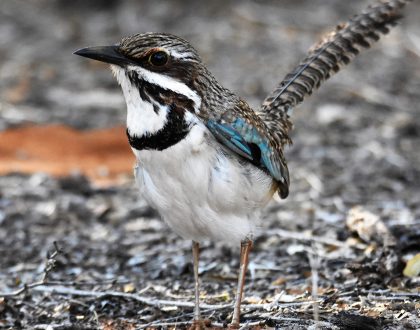
21/ Special interest – Birding tour in Madagascar
August 6, 2018

20/ Madagascar back to the roots
August 6, 2018
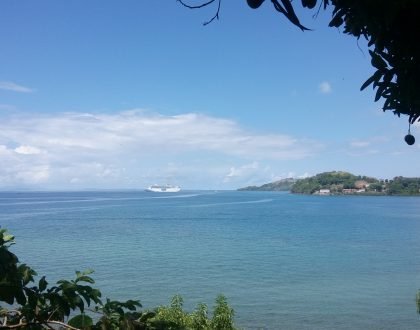
19/ Discover the hidden treasure of Madagascar,
August 6, 2018
